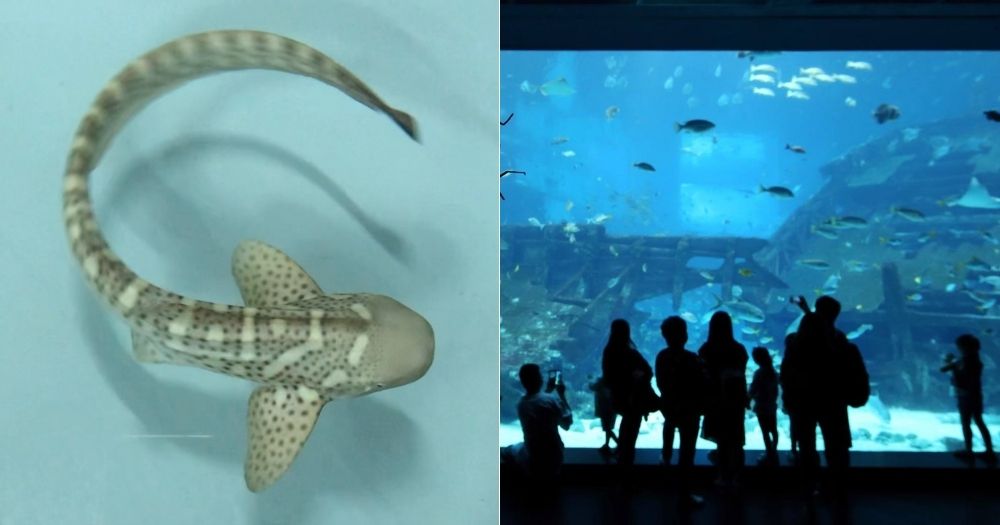Follow us on Telegram for the latest updates: https://t.me/mothershipsg
The panda cub has been dubbed as a "miracle baby" by some, given how difficult it is for a panda to conceive a baby.
But the panda cub is not the only "miracle baby" in Singapore.
The S.E.A. Aquarium welcomed its very own earlier this year on January 9.
A zebra shark named "Hope", born asexually, made its debut at the aquarium in a media event recently on Aug. 4.
Hope, the "miracle baby"
Hope, now seven-month-old, spans about 80cm long, and calls the aquarium's quarantine area home.
The baby shark will make its public debut once it is "large enough", a spokesperson from the Resorts World Sentosa (RWS) said at a media event.
The pup was sporting its adolescent yellowish stripes, but growing into its visible spots, when it greeted the media on Aug. 4.
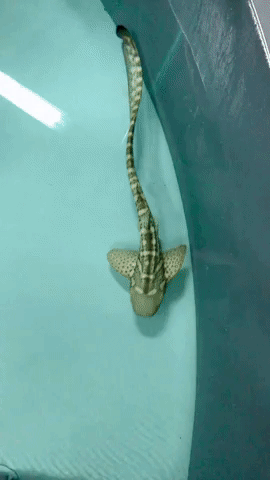 A striped Hope growing into her spotted skin. Video by Fiona Tan.
A striped Hope growing into her spotted skin. Video by Fiona Tan.
The RWS spokesperson shared that Hope's day-to-day routine includes picking up enrichment activities, such as target feeding.
Hope was described as a "bright" pup who is able to pick up enrichment activities quickly.
Why is Hope a 'miracle baby'?
During reproduction, the male zebra shark will transfer sperm to the female using claspers or pelvic fins. The female zebra shark can typically lay up to four eggs at a time.
Zebra sharks are oviparous, that means the creatures lay eggs that hatch outside of their bodies.
Considering that there are no male zebra sharks at S.E.A. Aquarium, it is extremely peculiar how the birth of Hope came to be.
Hope was conceived and hatched from an unfertilised egg which makes it a "miracle baby".
This process of asexual reproduction in the absence of a male is called parthenogenesis, an extremely rare phenomenon.
In fact, parthenogenesis is observed among zebra sharks only in recent years.
The very first case in the world was a zebra shark called Leonie from an aquarium in Australia. Leonie had lost her partner and lived away for males for some years but she managed to give birth to three pups in 2016.
When the scientists later conducted a DNA test on the pups, they could only find cells from Leonie.
The RWS spokesperson explained that that the ability to produce asexually could be an "invaluable survival mechanism". This could be a way for zebra sharks to keep their lineage and species intact until the female comes across a suitable mate.
Two "miracle babies" at the S.E.A Aquarium
Hope is not the only "miracle baby" at the S.E.A Aquarium.
The other "miracle baby" is Vanda, a zebra shark believed to be conceived through the same process in 2016.
The five-year-old predecessor was named after Singapore's national flower, as she was born on National Day (Aug. 9).
Amongst the nine eggs collected and incubated by aquarists at S.E.A Aquarium between March and June in 2016, Vanda was the only one that survived.
"Mermaid's purses"
Speaking to Mothership, a RWS spokesperson said that an average of around 10 to 15 empty egg cases are found by aquarists each week.
Eggs with yolks, on the other hand, are rare occurrence and are only chanced upon once, or maybe twice, in a month.
According to aquarist Bryan Ng, the eggs laid by a zebra shark are easy to spot even from afar as they are enclosed in dark brown egg cases, and coated in a slimy green fibre, known as "mermaid purses".
The slimy fibres help anchor the developing eggs in "mermaid's purses" to the seafloor.
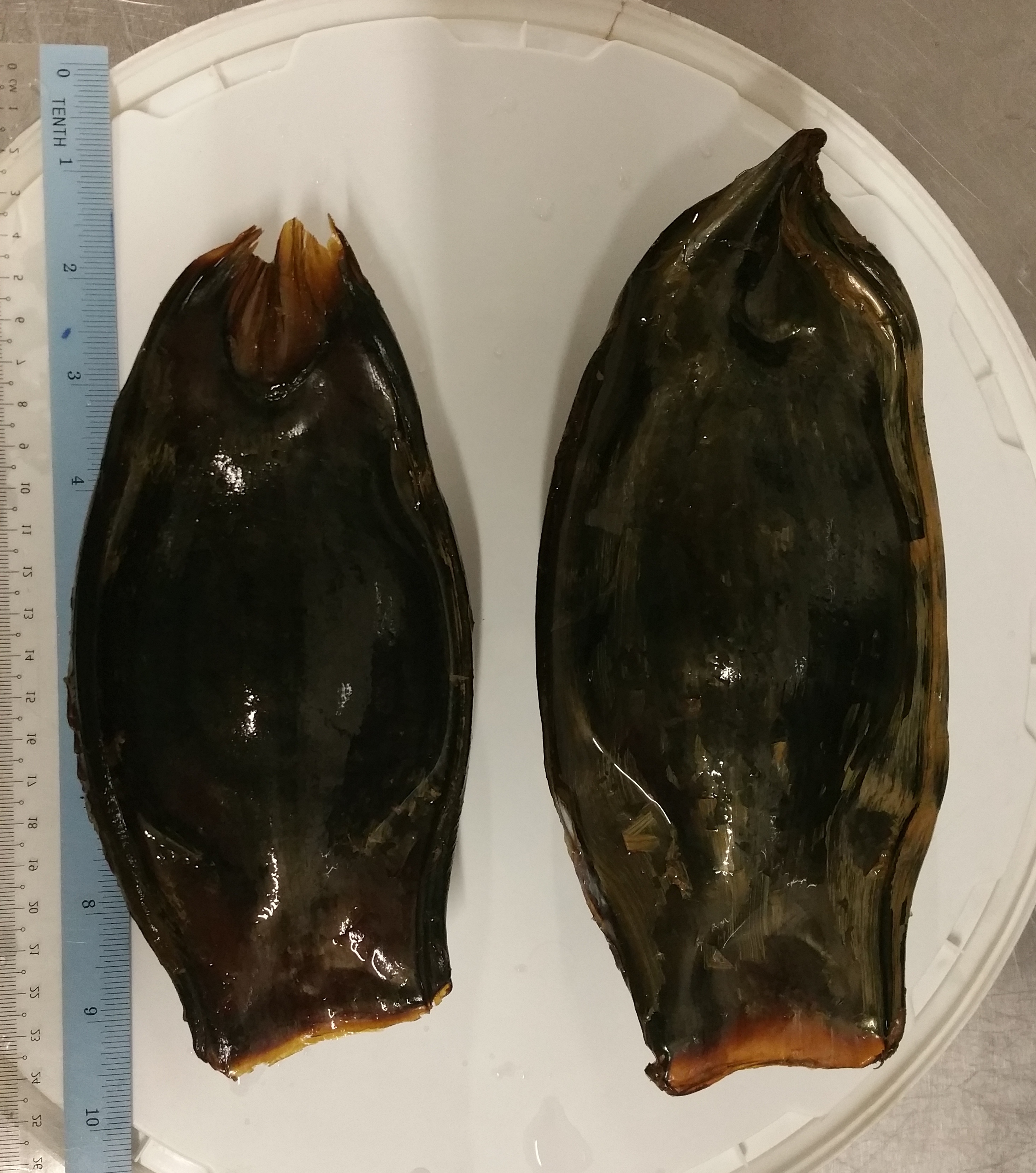 Zebra shark egg cases. Image courtesy of RWS.
Zebra shark egg cases. Image courtesy of RWS.
Once spotted and collected, empty egg cases without yolks are discarded while egg cases with yolks are incubated and monitored for embryo development, said the RWS spokesperson.
What happens during incubation?
The right conditions, such as water temperature, flow and salinity as well as the amount of light, are crucial during the incubation and development of eggs with embryos.
For instance, a constant flow of fresh and oxygenated water is vital to preventing infections on the zebra shark.
During incubation, the pup gets its nutrition from the egg yolk before hatching four to six months later.
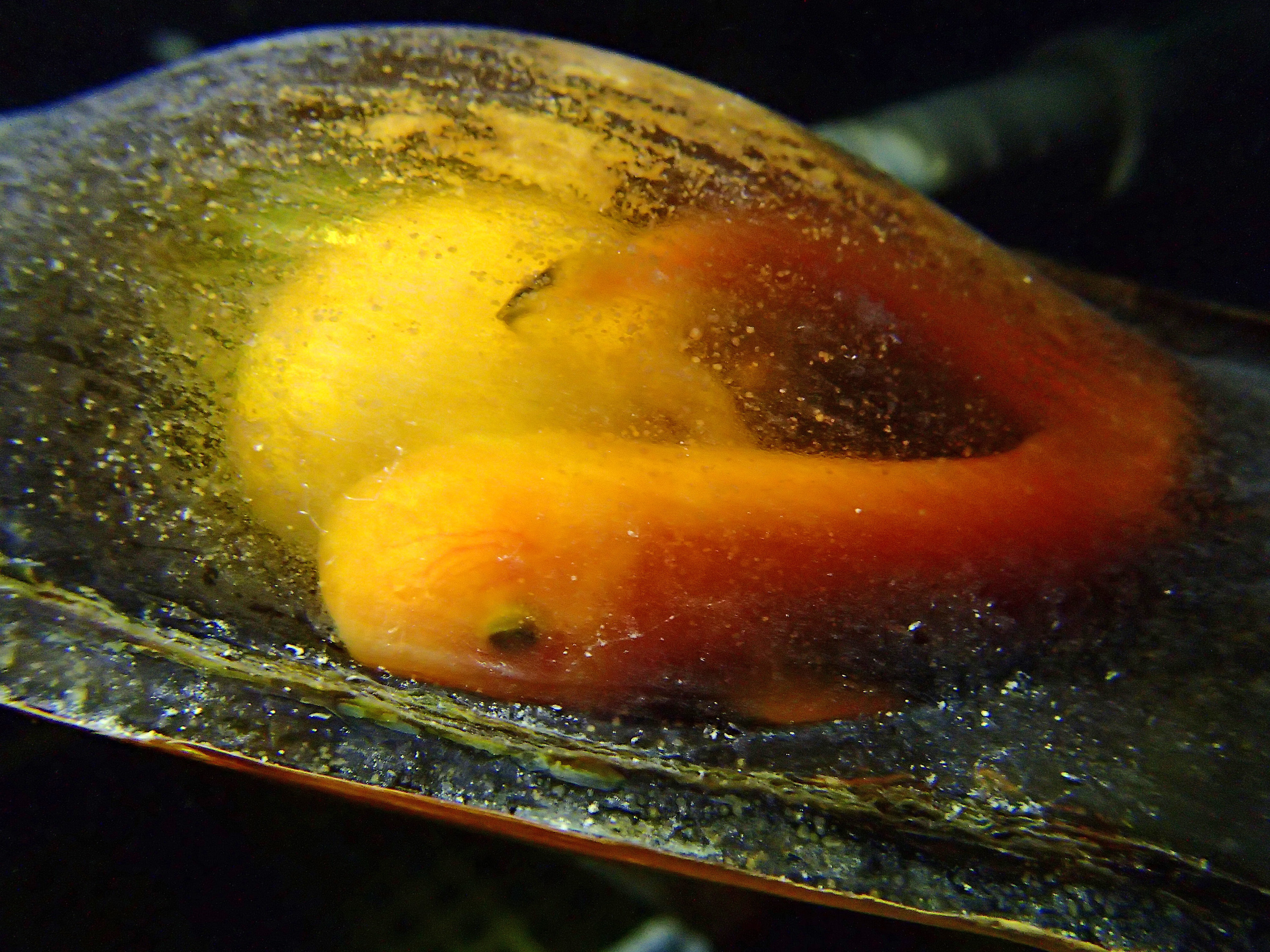 A developing Vanda at week six to eight. Image courtesy of RWS.
A developing Vanda at week six to eight. Image courtesy of RWS.
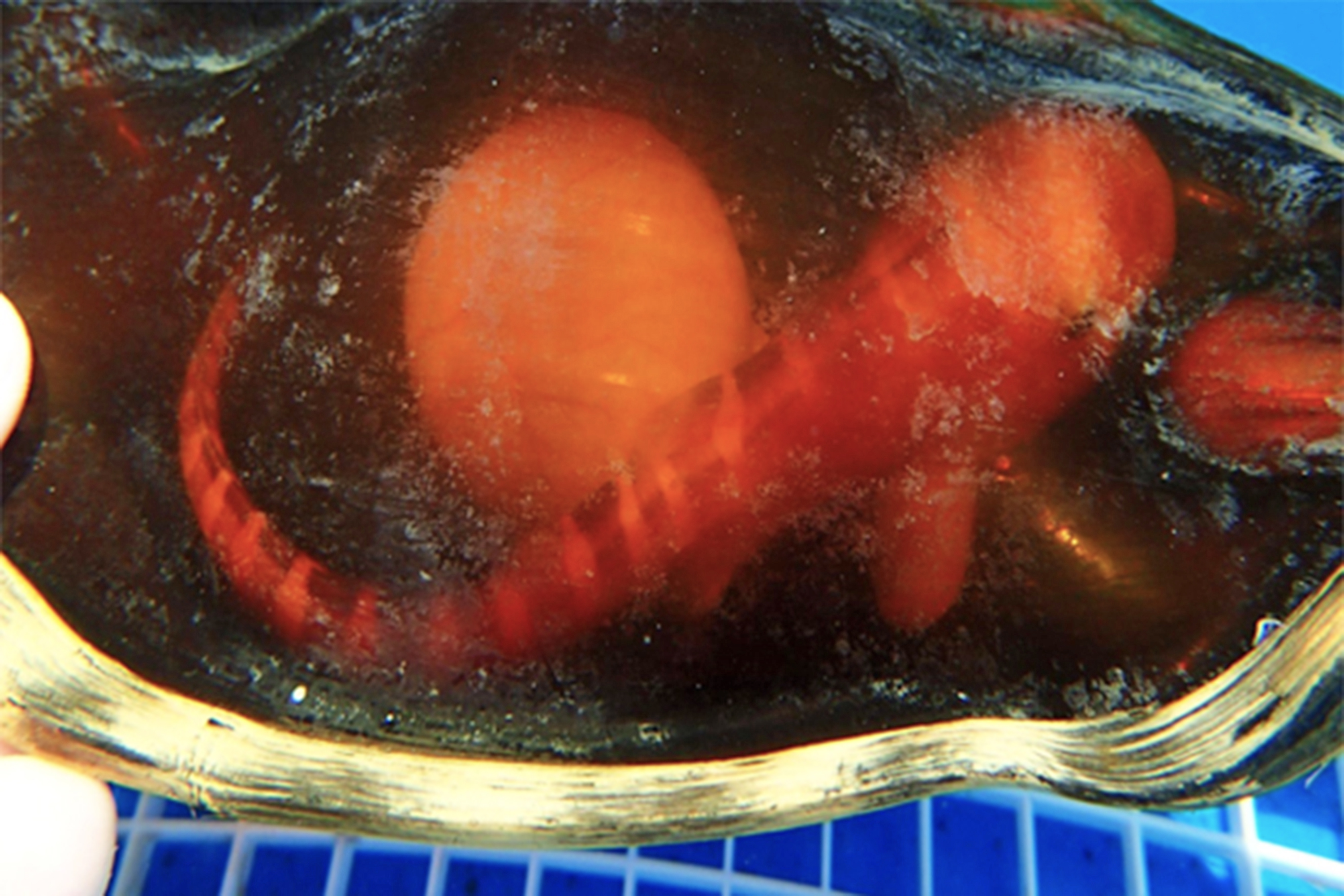 A developing Vanda at week 11. Image courtesy of RWS.
A developing Vanda at week 11. Image courtesy of RWS.
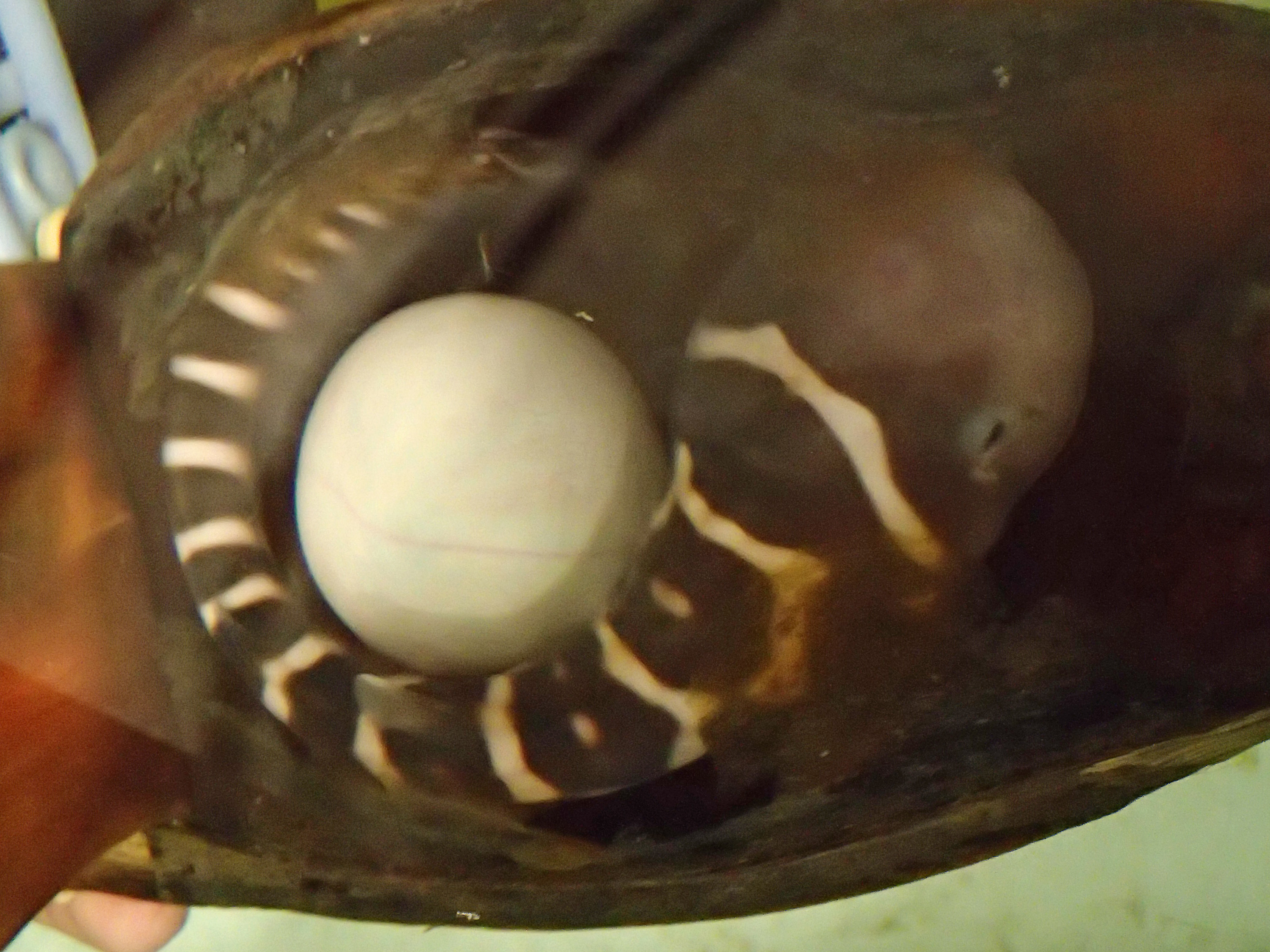 A developing Vanda at week 15. Image courtesy of RWS.
A developing Vanda at week 15. Image courtesy of RWS.
After which, the baby zebra shark will briefly continue feeding on the yolk remnants before the S.E.A. Aquarium's curatorial team takes over in providing the food.
Zebra sharks as they grow
Newly hatched pups have light vertical stripes cast against its almost black body.
Its body pattern resembles that of a zebra's stripes, hence its name.
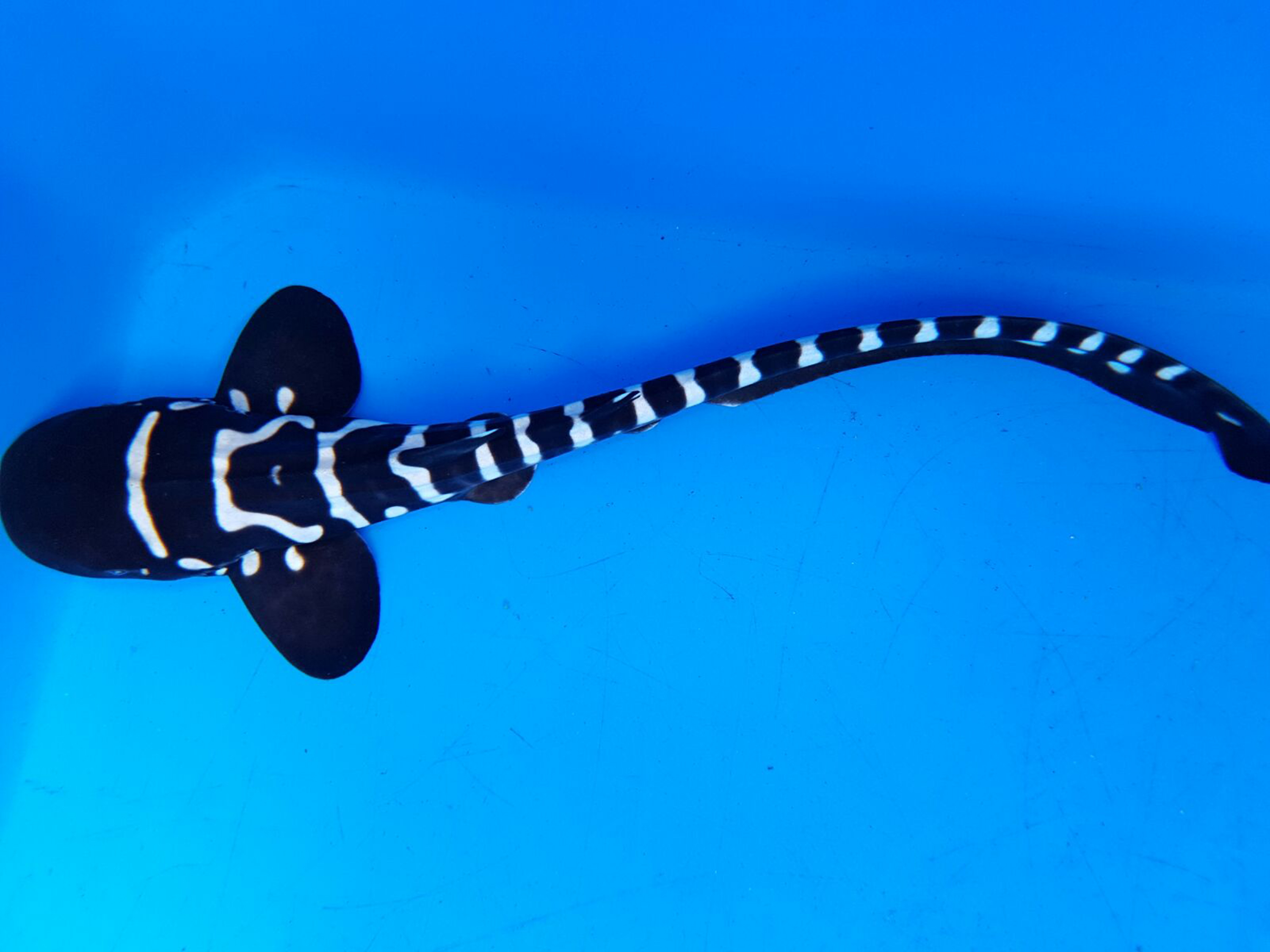 Newly hatched Vanda with distinct black and white stripes that resemble the body pattern of a zebra. Image courtesy of RWS.
Newly hatched Vanda with distinct black and white stripes that resemble the body pattern of a zebra. Image courtesy of RWS.
As the pup grows, its appearance morphs, where its stripes fade away with time, replaced by dark black spots, and its colouring lightens to a sandy brown colour.
Adult zebra sharks are sometimes mistaken as leopard sharks instead due to their appearance.
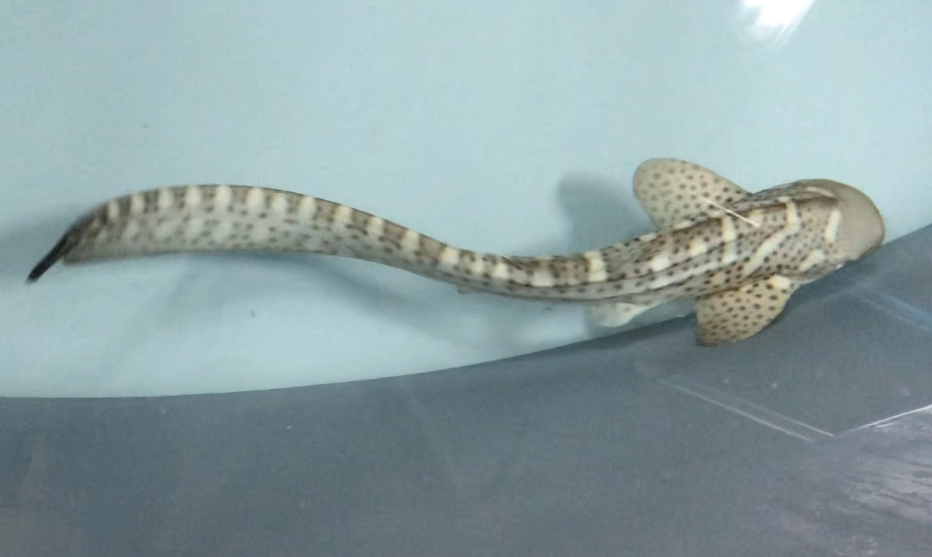 Hope. Image by Fiona Tan.
Hope. Image by Fiona Tan.
Target feeding
The RWS spokesperson said their zebra sharks are fed a variety of large squid, mackerel, kuning, selar, prawns and capelin.
Target feeding, or recall-and-feed, is also conducted with zebra sharks like Hope and Vanda at the aquarium.
The process acts as a positive reinforcement which allows aquarists to form closer bonds with the zebra sharks, and this in turn enables the aquarists to assess the sharks’ well-being and physical health easily and quickly, the RWS spokesperson explained.
Target feeding was done with a long pole with an attached bell and ball, and lowered into the water, Mothership observed.
The pole was then shaken, where the bell and the ball each acted as a hearing and visual stimuli.
In response, the zebra shark tapped and pushed against the ball.
Once done, the zebra shark was rewarded for their efforts with food.
For Hope, the reward was a piece of fish that was fed to the pup with a hook attached to a pole that was lowered into the water.
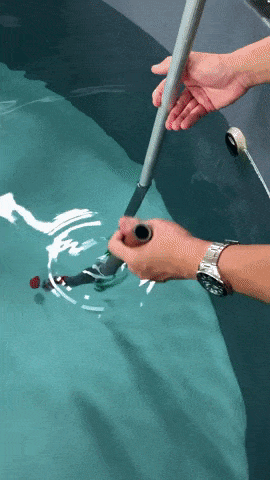 Recall-and-feed with Hope. Video by Fiona Tan.
Recall-and-feed with Hope. Video by Fiona Tan.
For Vanda, the menu for the day was slightly different on Aug. 4 in celebration of her fifth birthday.
The girl received an iced cake made up of tuna, mackerel, squid, crab and prawn that day.
All of which are the zebra shark's favourite, her aquarist Bryan Ng shared.
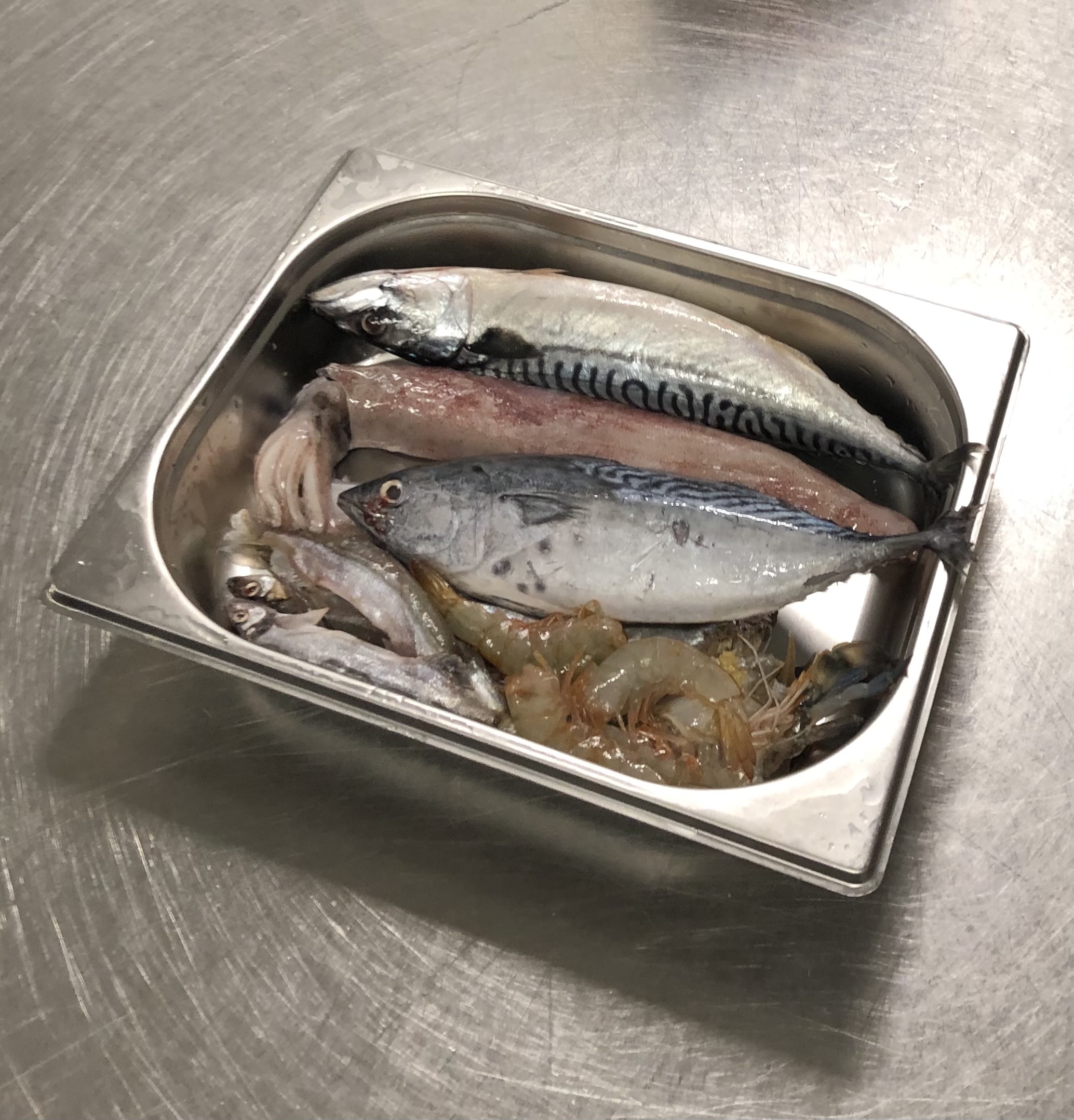 What's going into Vanda's cake. Image by Fiona Tan.
What's going into Vanda's cake. Image by Fiona Tan.
The frozen cake also acts as a puzzle for the zebra shark as it is not so easy to reach the food. This serves as a form of enrichment activity for her, said Ng.
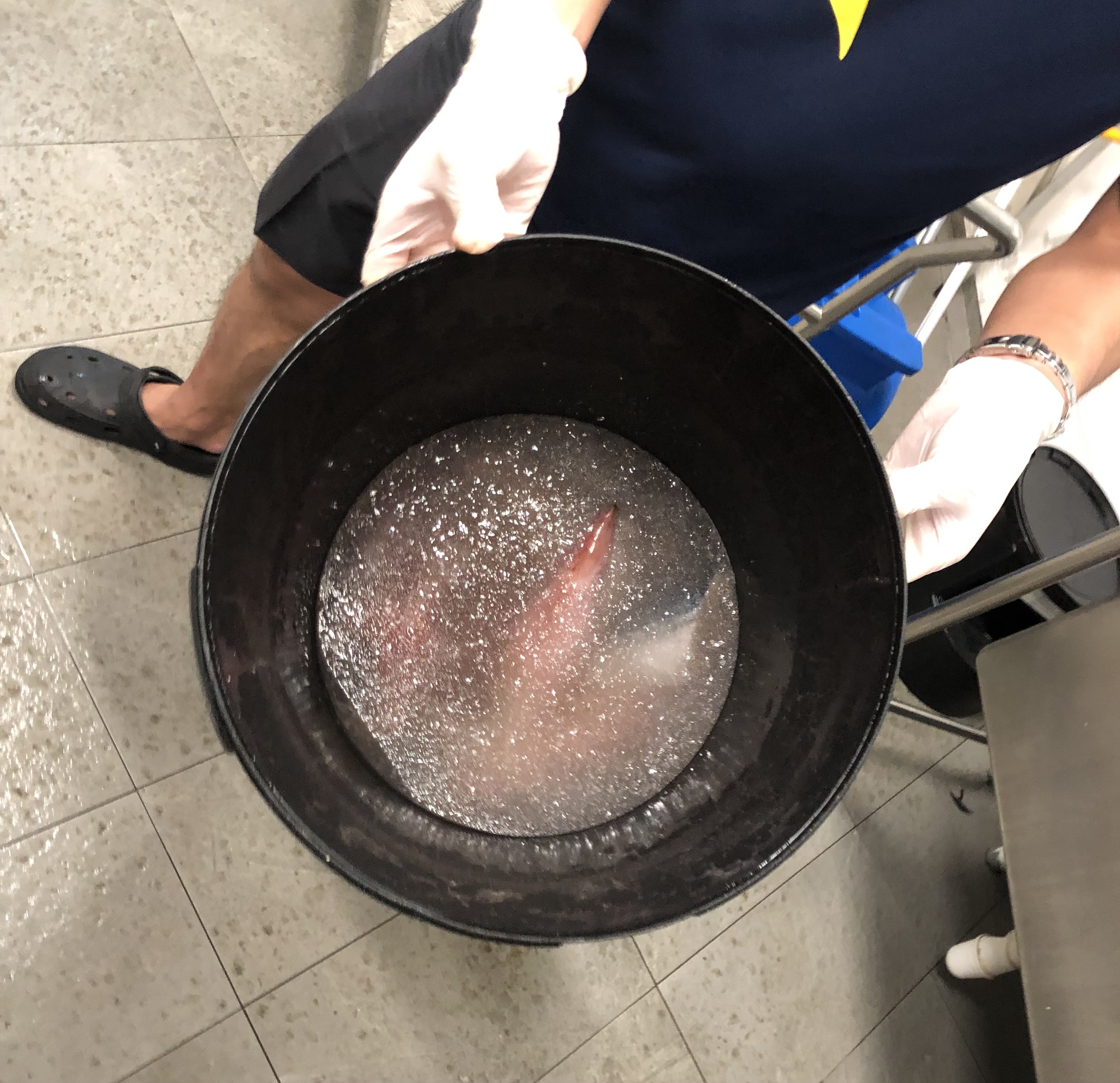 Vanda's iced "birthday cake". Image by Fiona Tan.
Vanda's iced "birthday cake". Image by Fiona Tan.
More about zebra sharks
Zebra sharks are a species of carpet sharks. They are also the only member left in the family of Stegostomatidae.
Zebra sharks dwell at the bottom of the sea, near coral reef, at rubble or sandy habitats.
They can be found in areas with tropical waters, such as the Indo-Pacific region, India, most of Southeast Asia and the surrounding regions, and northern Australia.
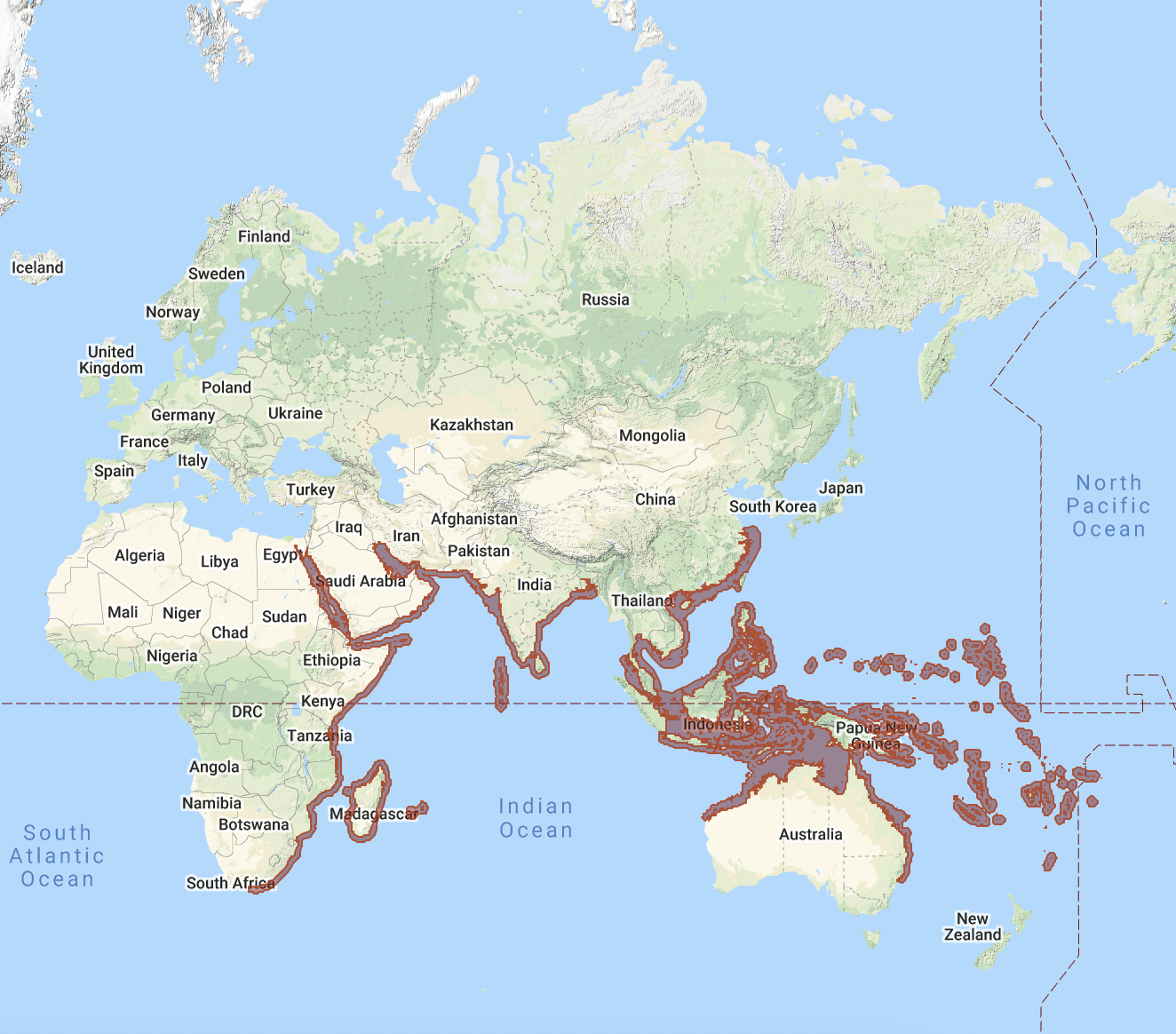 Image from EDGE website.
Image from EDGE website.
While the pups are around 50cm to 90cm long, they can grow up to 2.5m as adults in the wild.
Adults have five distinct parallel ridges running down its body – one along their dorsal midline, which merges into their dorsal fin on their back, and two on each side of their body.
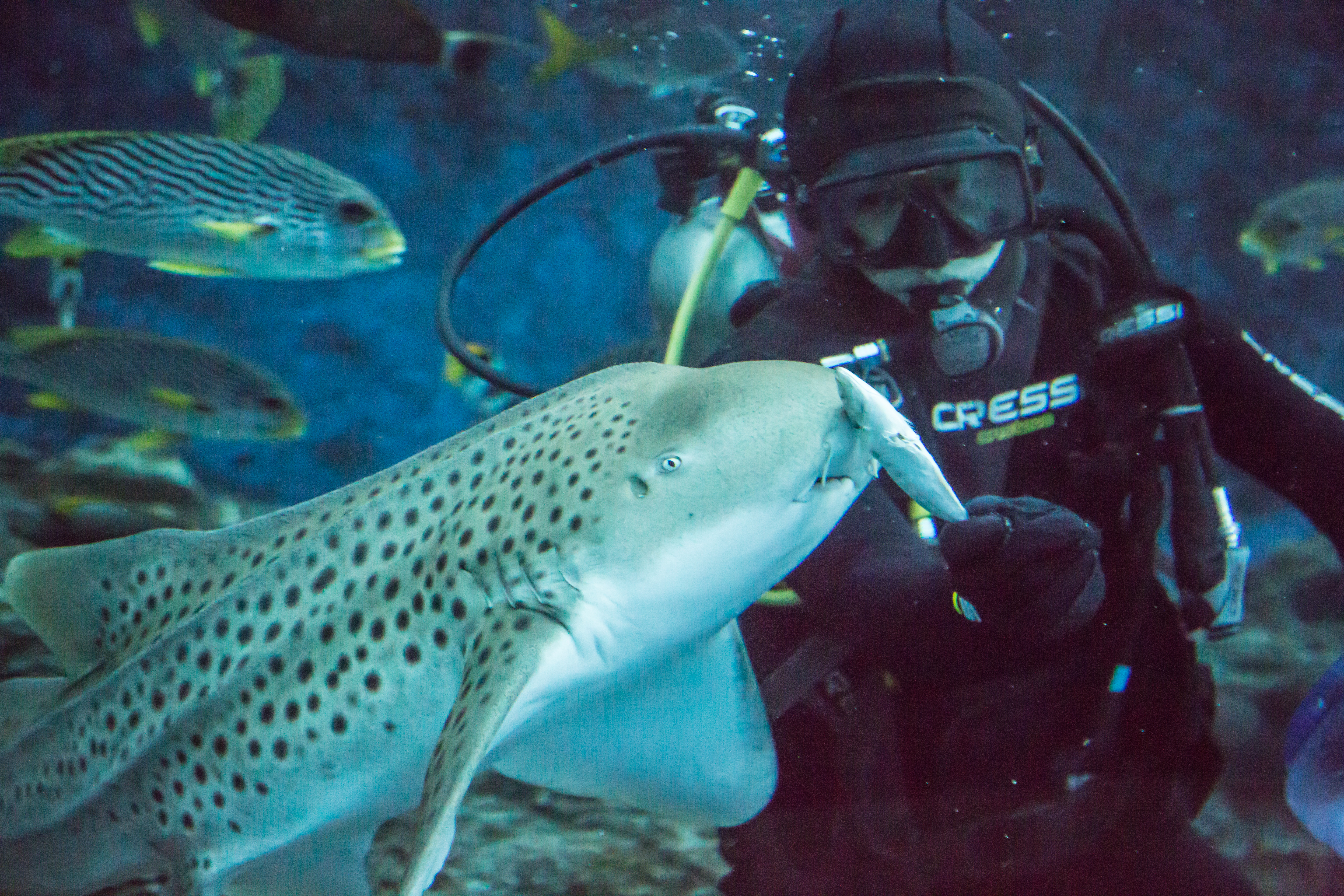 Vanda's middle and side ridges. Image by Fiona Tan.
Vanda's middle and side ridges. Image by Fiona Tan.
Under the International Union for Conservation of Nature (IUCN) Red List of Threatened Species, these group of sharks are classified as ‘Vulnerable’.
The number of zebra sharks left in the wild is dwindling because of habitat degradation, pollution, overfishing, hunting and shark finning.
Other fishy stories:
Top image by Fiona Tan and from VisitSingapore/Facebook.
If you like what you read, follow us on Facebook, Instagram, Twitter and Telegram to get the latest updates.
